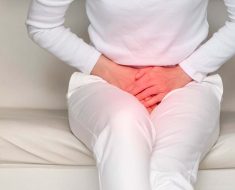As scientists learn more about the body’s internal ecosystem, they gain more understanding of how these infections begin as well as how to treat them.
At the same time, there is a longstanding tradition of using natural or home remedies to treat yeast infections.
There is no clear evidence to support these complementary treatments, but some of the research on them is encouraging.
How does a toddler get a yeast infection?

Yeast occurs in many places in the body, primarily on the skin.
It thrives in a warm, moist environment. Therefore, infections tend to occur in areas of the body that stay moist.
The armpits and the areas of skin beneath a diaper are two examples.
The latter is one reason why toddlers are so susceptible to yeast infections.
Below, we look at how diapers cause yeast infections and cover some other causes.
Diapers
Diapers are the most significant cause of yeast infections in babies and toddlers. More specifically, infections can occur when a wet or soiled diaper remains against the skin too long.
The risk of yeast infections is equally high with both cloth diapers and disposable diapers. Soiled or wet underwear is also risky, though less so than diapers.
Changes to the microbiome
The term microbiome describes the sprawling ecosystem of fungi, bacteria, viruses, and other tiny organisms that exist inside the body at all times. All plants and animals have microbiomes.
The microbiome is not only harmless but is quite important to several bodily functions.
Occasionally, something throws the microbiome out of balance. Researchers have suggested that this might cause an excess of yeast. This theory proposes that the excess yeast passes through the digestive system and contributes to a yeast infection when it leaves the body.
Antibiotics
Taking antibiotics can result in an imbalance between bacteria and yeast.
The purpose of antibiotics is to kill bacteria. They are very useful for killing the harmful bacteria that proliferate during an infection, which is necessary to restore a person to full health.
However, antibiotics can also kill the bacteria that help the body function on a day-to-day basis. The death of these good bacteria can allow yeast to thrive in their absence.
Therefore, toddlers who take antibiotics can sometimes develop a yeast infection as a result. It is also possible that an adult could get a yeast infection of the skin around the nipples after taking antibiotics. They could then pass this onto a baby or toddler through breast-feeding.
Yeast infection vs. diaper rash
At times, people may confuse a yeast infection with other types of diaper rash.
The most common type of diaper rash is a painful but less serious condition that results from chafing and irritation.
If the rash is bright red with small red dots around the edges, it is probably a yeast infection. Yeast infections do not respond to diaper cream.

Treating yeast infections is usually inexpensive and straightforward.
Sometimes, it costs nothing at all to ease the symptoms.
People have traditionally used the following home remedies to relieve the symptoms of a yeast infection and promote recovery:
- Apple cider vinegar: Add a cup of this vinegar to a toddler’s bath water.
- Garlic: Either mix a clove of raw garlic into a toddler’s food or mash it into a paste and spread it over the affected area of skin.
- Tea tree oil: Boil one half-cup of water and allow it to cool. Add 5 drops of tea tree oil and use the solution to clean the affected area.
- Oatmeal: Oatmeal can help to ease the symptoms of a yeast infection. Place half a cup in a cheesecloth or similar pouch and drop it into the toddler’s bath water.
- Oil of oregano: There is some laboratory evidence that this flavoring agent, which is also known as origanum oil, may be an effective treatment for fungal infections. However, studies in humans are necessary to confirm this.
These remedies are not scientific, and there is not much evidence supporting them. However, there is little risk in trying any of them. Watch for any signs of sensitivity to the remedy though, including a rash that worsens rather than improving.

Antifungal medications are the primary treatment for yeast infections and may be used in some cases.
These are typically over-the-counter (OTC) or prescription ointments that contain the active ingredients nystatin or clotrimazole.
Another common antifungal medication for yeast infections is fluconazole, which is available by prescription as a pill or in liquid form.
Never use suppositories on a toddler unless a doctor gives specific directions to do so.
Takeaway
Yeast infections in toddlers cause discomfort but are very treatable.
For generations, many people have trusted natural remedies to treat a variety of conditions.
An increasing amount of evidence shows that some of these remedies are safe ways of treating the symptoms of a yeast infection. However, it is vital to see a doctor if a toddler’s rash does not begin to improve within a few days.
Source: Read Full Article





